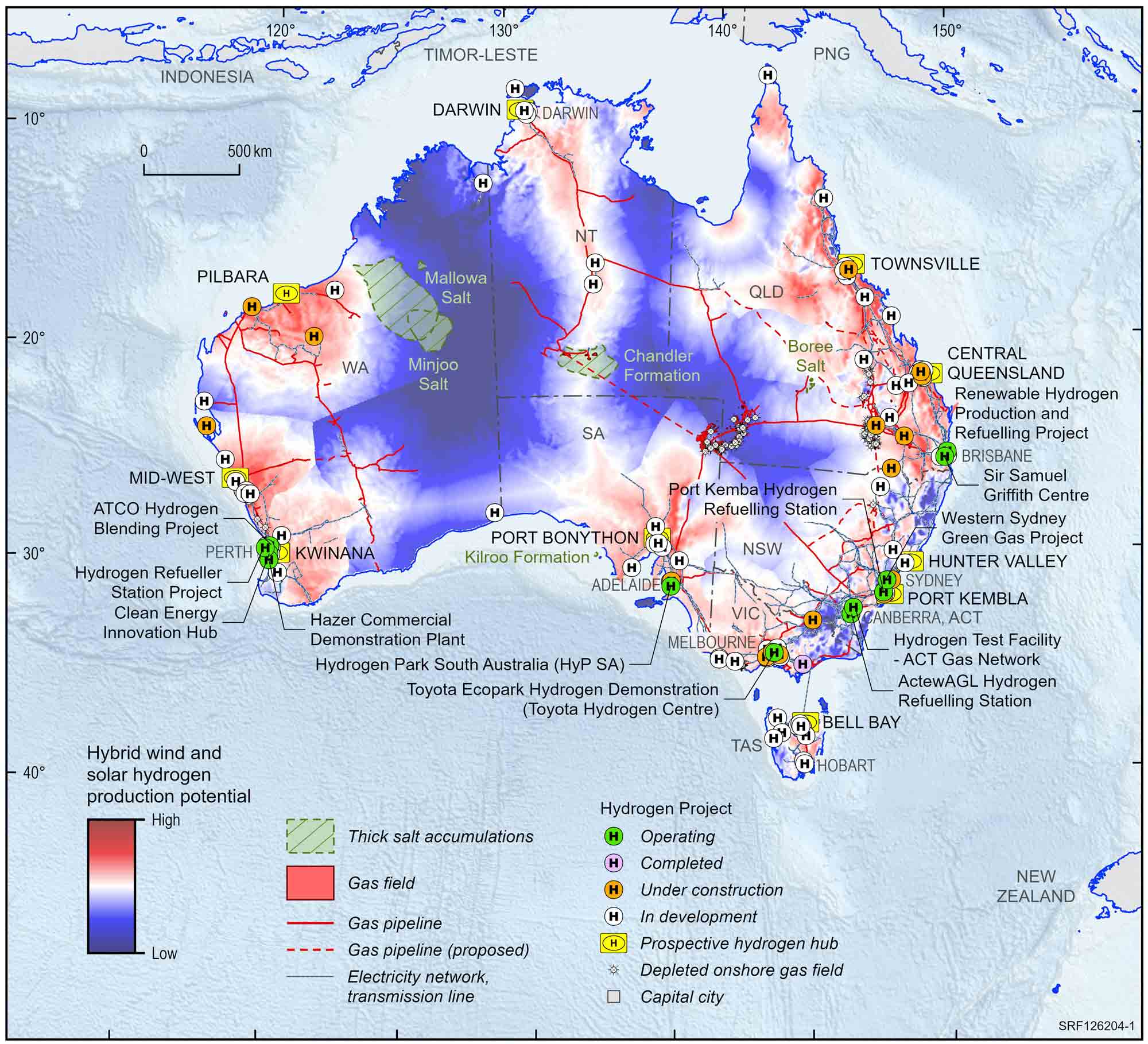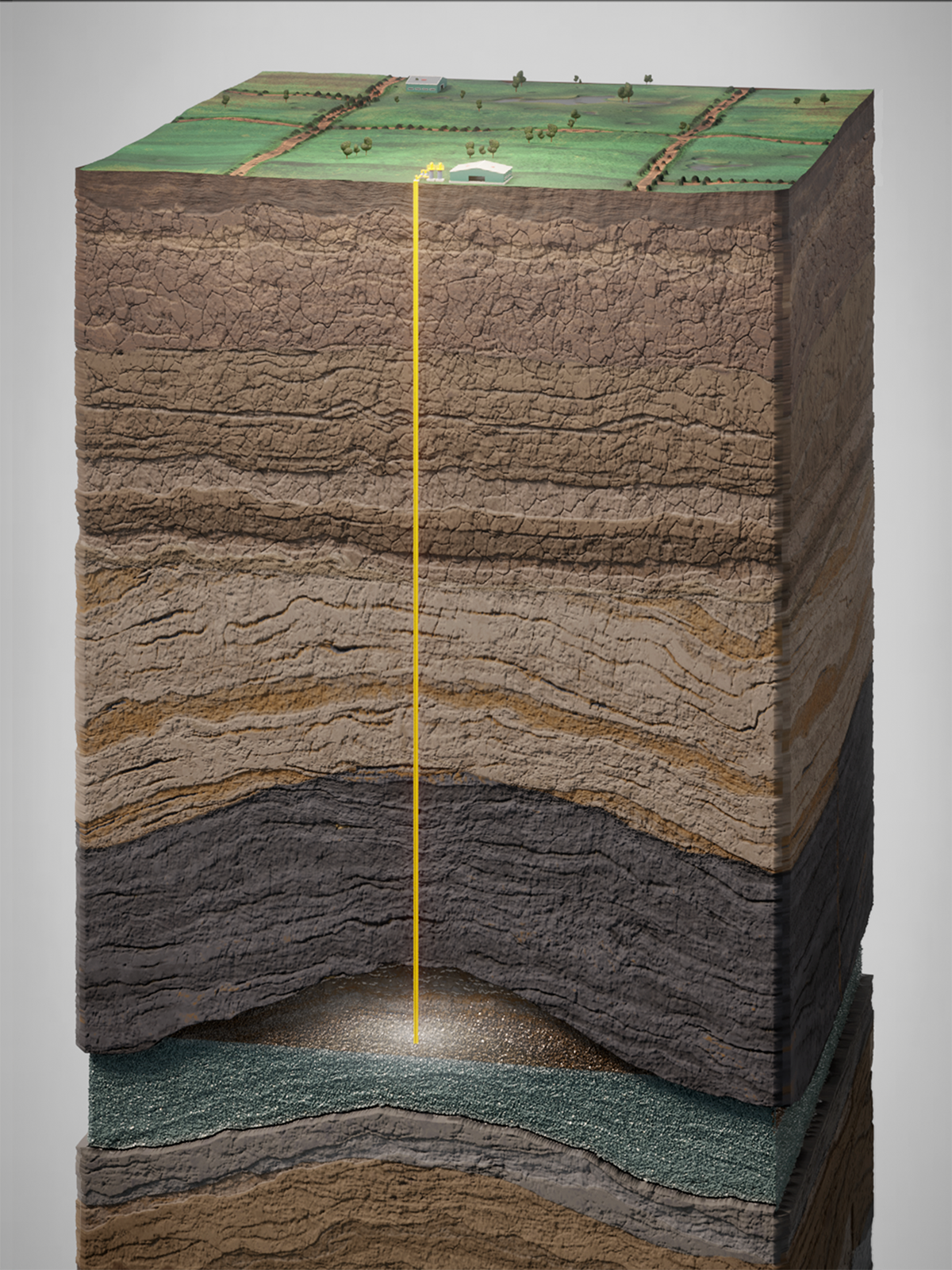Australia’s hydrogen production potential
Page last updated:24 October 2023
Government actions to advance the Australian hydrogen industry
Governments in Australia are working on activities to implement the National Hydrogen Strategy led by the Federal Governments Department of Climate Change, Energy, the Environment and Water.
The 2019 National Hydrogen Strategy identifies hydrogen hubs as the best way for the Australian industry to achieve scale. Hydrogen hubs are regions where multiple hydrogen producers, user and potential exporters are collocated. This minimises the cost of infrastructures such as powerlines, pipelines, storage tanks and refuelling stations.
Hydrogen hubs will create economies of scale to drive down costs of production, unlocking further demand for hydrogen as costs fall. Hubs will also create efficiencies by leveraging and supporting the existing industrial capabilities and workforces in relevant regions. Hubs will stimulate innovation and increase workforce skills development, as well as support other existing industrial sectors in these regions to lower both emissions and costs in doing business (State of Hydrogen Report 2021, Department of Climate Change, Energy, the Environment and Water).
Geoscience Australia supporting hydrogen research
Pilots and demonstrations are essential for new industries to evolve. The Australian Government is helping industry develop demonstration and pilot hydrogen projects through a wide variety of initiatives (State of Hydrogen Report 2021, Department of Industry, Science, Energy and Resources). This hydrogen research, knowledge sharing, and collaboration is supported Geoscience Australia’s digital mapping capabilities, Earth science knowledge and provision of openly accessible geoscience data and information.
The Hydrogen Economic Fairways Tool
Our Hydrogen Economic Fairways Tool (HEFT) is helping policymakers and investors make decisions about the location of new infrastructure and the development of hydrogen hubs. The tool conducts detailed geospatial-economic analysis of future large-scale hydrogen projects.
Natural hydrogen
There is increasing interest in the presence of natural hydrogen accumulations and the potential discovery of hydrogen gas fields. The extent of this geological resource is not well understood, but there are reports of high concentrations of hydrogen in gas samples in Australia. In addition, some Australian state jurisdictions have recently amended their petroleum exploration licences to include natural hydrogen. Read Geoscience Australia’s Hydrogen in Australian natural gas: occurrences, sources, and resources.
Transportation and storage
Like natural gas or LNG, hydrogen can be transported by pipeline, truck or ship as a compressed gas or a very cold liquid. Hydrogen can also be converted into other chemicals that might be easier to transport such as ammonia or methylcyclohexane. Hydrogen is usually stored in tanks but large quantities can be stored underground in salt caverns (and possibly depleted gas reservoirs) to be available for use as required. Underground storage of gases is common practice for natural gas storage. Further work is required to identify areas in Australia, such as salt deposits, where hydrogen could be stored to help balance supply and demand.
This map identifies current hydrogen projects (as of September 2023) and areas of high suitability for hybrid wind and solar hydrogen production in Australia, which were identified using the Hydrogen Economic Fairways Tool (ga.gov.au/heft)
Under our National Hydrogen Project for the Exploring for the Future Program, Geoscience Australia is exploring for suitable underground salt accumulations for large-scale hydrogen storage for both domestic use and export. This will include mapping the nationwide distribution of thick salt accumulations in salt-bearing sedimentary sequences, including Carribuddy Group salt in the Canning Basin, Boree salt in the Adavale Basin and Kilroo Formation in the Polda Basin. In addition, new sensing salt prospecting techniques will be developed and tested. Read Australian salt basins-options for underground hydrogen storage by Geoscience Australia.
Hydrogen salt storage involves producing artificial caverns in naturally occurring geological salt deposits (or diapirs). Underground storage is a safe and cheap alternative for large scale hydrogen storage compared to other forms, such as liquid ammonia or liquid hydrogen, or equivalent battery storage.
Depleted gas fields are also another potential option for large scale hydrogen storage. If found suitable, depleted gas fields, along with salt caverns, could store very large quantities of hydrogen to support domestic seasonal power demands and export needs.


